Exploring How Animals Support Autism Therapy and Development
Understanding Animal-Assisted Therapy and Its Impact on Autism
Animal-Assisted Therapy (AAT) has garnered increasing attention as a beneficial supplementary intervention for individuals with autism spectrum disorder (ASD). Through interactions with carefully selected animals, AAT provides a multisensory, emotionally supportive environment aimed at improving social skills, emotional regulation, and overall wellbeing. This article explores the scientific basis, benefits, and challenges of AAT in supporting autistic individuals, illuminating how human-animal bonds foster meaningful development.
The Core Benefits of Animal-Assisted Therapy for Autistic Individuals
Animal-Assisted Therapy (AAT) has gained recognition as a valuable intervention for children and adults with autism spectrum disorder (ASD). It involves interactions with animals to promote various aspects of development and wellbeing.
What are the benefits of Animal-Assisted Therapy for individuals with autism?
AAT offers multiple advantages that can significantly support individuals on the spectrum. One of the primary benefits is the improvement in social skills. Many studies have shown that AAT can positively influence social communication, social motivation, and social awareness. For example, a comprehensive review of 45 studies involving over 1,200 participants indicated notable enhancements in social interaction and language skills, especially in younger children.
In addition to social improvements, emotional regulation is another crucial area where AAT appears beneficial. Participants often experience increased self-confidence and acceptance, which can help reduce feelings of loneliness and emotional distress. The multisensory experiences provided by animals—touching, environmental attentiveness, and interaction—aid in calming children and decreasing anxiety levels.
Moreover, AAT fosters better communication abilities. Many therapists and parents have observed better behavioral regulation and emotional awareness in children engaging with animals. For instance, interaction with therapy dogs has been linked to reduced stress and improved social responsiveness, even in adults with ASD.
Different types of animals are used in these interventions, including dogs, horses, and farm animals. Equine-assisted therapies, such as therapeutic horseback riding, are particularly noted for their role in helping children develop balance, coordination, and motor skills, while also encouraging speech and language development.
The activities are tailored to individual needs and can follow various models, such as triangle, diamond, or star, depending on personal goals. This client-centered approach ensures that therapy addresses specific challenges faced by each person.
While the benefits are promising, it is essential to acknowledge the limitations. Potential risks include animals triggering increased autistic traits or sensory overload, especially if multiple animals are involved or if the animal type is not carefully selected. Thorough assessment and planning are crucial for maximizing benefits while minimizing adverse effects.
In summary, Animal-Assisted Therapy presents a holistic approach to supporting individuals with autism. It can improve social skills, emotional regulation, and communication—areas that are often challenging for those on the spectrum. As research continues, understanding how best to implement these interventions will help maximize their potential to enhance quality of life for autistic individuals.
Scientific Evidence Supporting AAT for Autism
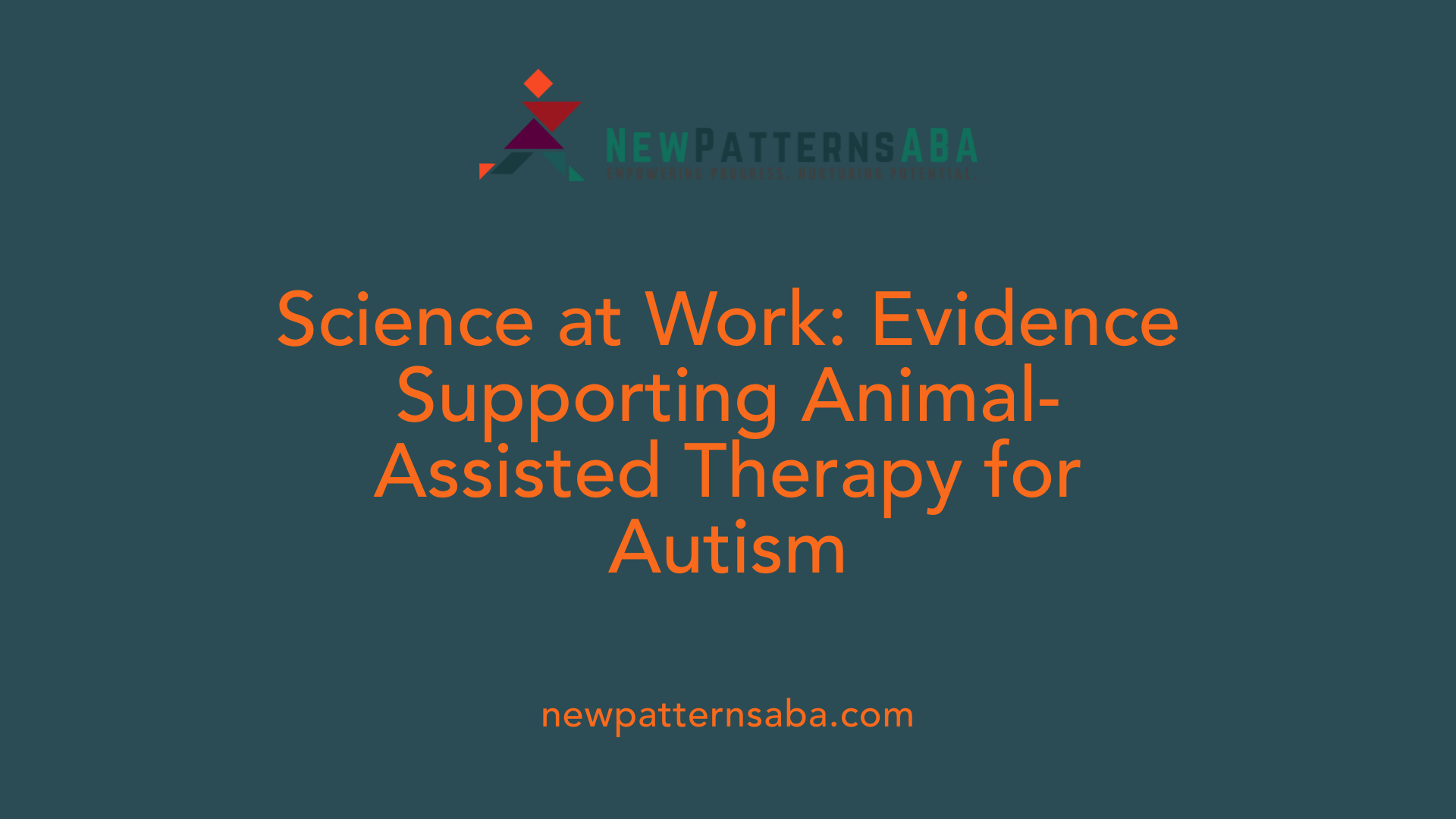
What scientific research supports the effectiveness of Animal-Assisted Therapy for autistic individuals?
A growing body of scientific studies and systematic reviews provide evidence supporting the benefits of Animal-Assisted Therapy (AAT) for children and adults with autism spectrum disorder (ASD). Multiple studies, including randomized controlled trials, show that AAT can lead to significant improvements in social, behavioral, and emotional domains.
In particular, research on therapeutic horseback riding, also known as equine-assisted therapy, reveals notable reductions in irritability and hyperactivity. Such interventions also appear to enhance social cognition and sensory processing skills. For example, participants often demonstrate better communication, increased confidence, and greater emotional regulation.
Studies involving dogs, guinea pigs, and dolphins highlight improvements in social motivation and emotional awareness. These animals create a calming environment that encourages trust and social engagement. Evidence also suggests that interactions with animals can promote oxytocin release, which is associated with bonding and stress reduction.
While many studies report positive effects, the research is still in development. Variability exists in the types of animals used, intervention durations, and the methodologies applied. This variability makes it challenging to draw definitive conclusions but does not diminish the overall trend indicating that AAT can be a valuable supplementary intervention.
Recent reviews emphasize that AAT may improve core symptoms of ASD, such as social communication, irritability, and hyperactivity. Nonetheless, long-term effects remain less understood, and high-quality studies with consistent standards are needed to strengthen the evidence base.
In sum, current scientific findings support the role of AAT as a beneficial modality for developmental and behavioral improvements in autistic individuals, especially as part of comprehensive treatment plans.
Addressing Specific Autism Challenges Through AAT
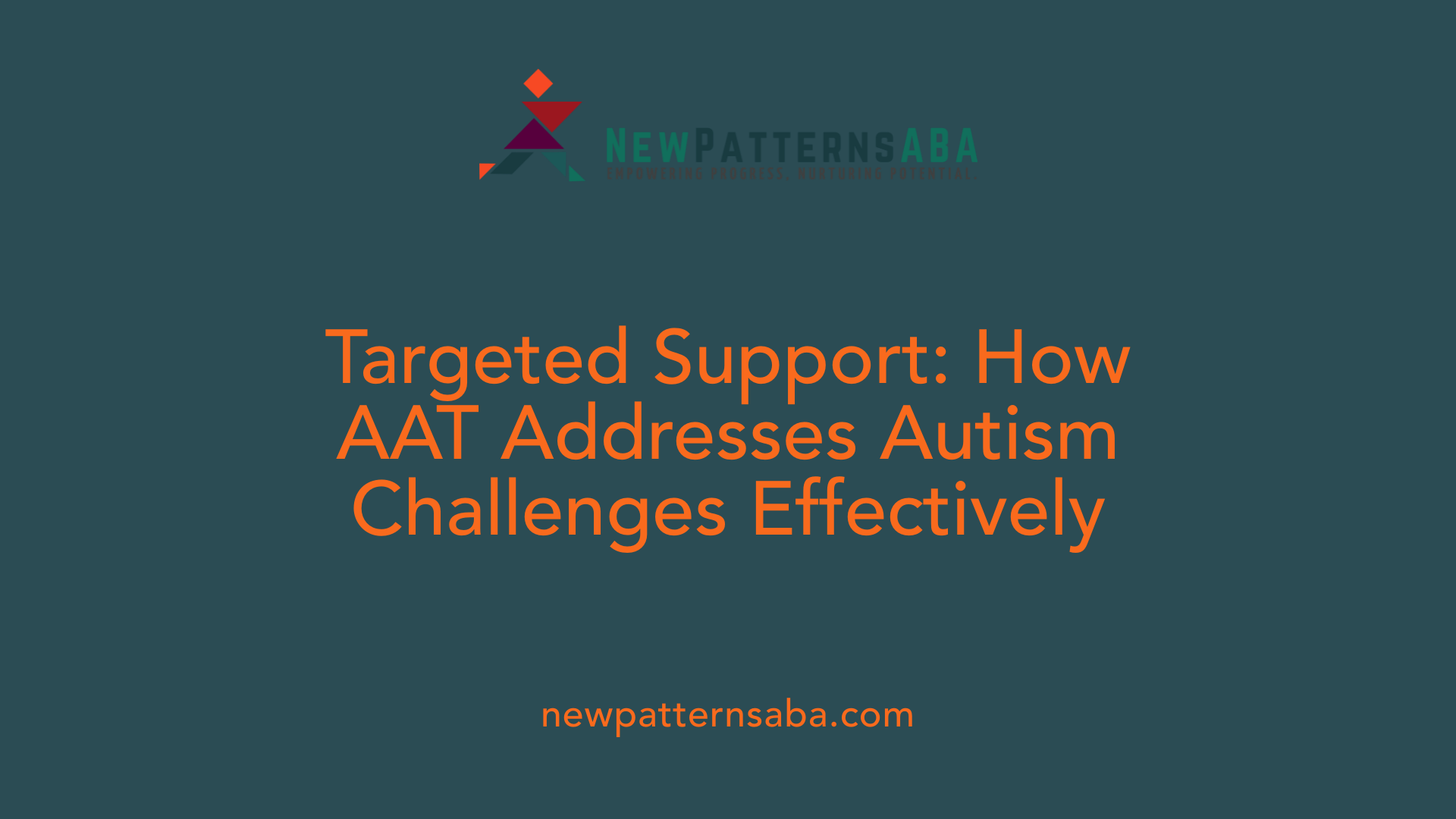
How does Animal-Assisted Therapy address specific symptoms or challenges in autism?
Animal-Assisted Therapy (AAT) offers a holistic approach to tackling some of the core difficulties faced by children with autism. It primarily promotes social engagement by encouraging interactions with trained animals, which can serve as natural ice breakers. For many children, engaging with animals like dogs or horses opens pathways to social behaviors such as smiling, sharing, or initiating conversations.
Communication skills also often improve with AAT. The presence of a calm, accepting animal helps children feel more comfortable expressing themselves. Over time, this can translate into better verbal and non-verbal communication, reducing feelings of loneliness and social withdrawal.
A significant benefit of AAT lies in its ability to reduce anxiety and help manage sensory overload. The multisensory experiences—touching animals, environmental attentiveness—provide soothing stimuli that can calm hyperactivity and emotional outbursts like meltdowns. Children learn to regulate their emotional responses as they build trust and emotional openness through consistent animal interactions.
Tailored to each child's unique needs, AAT can incorporate different models of delivery, such as the triangle, diamond, or star models. These approaches ensure that therapy sessions remain focused on individual challenges, whether they involve sensory sensitivities, social skills, or behavioral regulation.
In summary, AAT addresses autism-related difficulties by creating a safe, engaging environment where children can develop social and communication skills, reduce feelings of anxiety, and improve overall emotional wellbeing. Such personalized interventions have the potential to make meaningful differences in managing autism's complex symptoms.
Impact on Stress, Social Skills, and Psychological Wellbeing
What are the key findings regarding the impact of Animal-Assisted Therapy on stress, social skills, and psychological well-being in autistic individuals?
Research indicates that Animal-Assisted Therapy (AAT) offers valuable benefits for children and adults with autism by addressing their emotional and social needs. One of the most notable effects is the reduction of stress.
Participation in AAT, especially with dogs, has been associated with decreases in perceived stress levels in adults with autism. The presence of animals creates a calming environment, helping individuals manage anxiety and emotional distress more effectively.
Beyond stress reduction, AAT promotes improvements in social responsiveness. In children and adolescents, studies have observed enhanced social engagement, better communication skills, and increased motivation to interact. For instance, therapies involving horses have shown positive trends in social communication and language skills.
Emotional wellbeing also benefits from interactions with animals. Many participants report increased self-confidence, acceptance, and emotional regulation, which can reduce feelings of loneliness and promote a sense of safety.
A meta-analysis that examined multiple studies highlights significant gains in social communication, irritability, hyperactivity, and language use following AAT interventions. Specifically, improvements in social skills like understanding social cues and showing prosocial behaviors have been noted.
Despite these promising results, some core social cognition aspects—such as social awareness and mannerisms—show limited change. This suggests that while AAT can bolster certain areas, it may be less effective for others.
However, the current evidence faces limitations. Many studies have small sample sizes, lack long-term follow-up, and vary widely in methodology, making it hard to draw definitive conclusions about the therapy’s overall effectiveness.
In summary, AAT appears to be a beneficial tool in reducing stress and advancing social and emotional development in individuals with autism, with continued research necessary to strengthen the scientific evidence.
Supporting Development and Well-being Through AAT
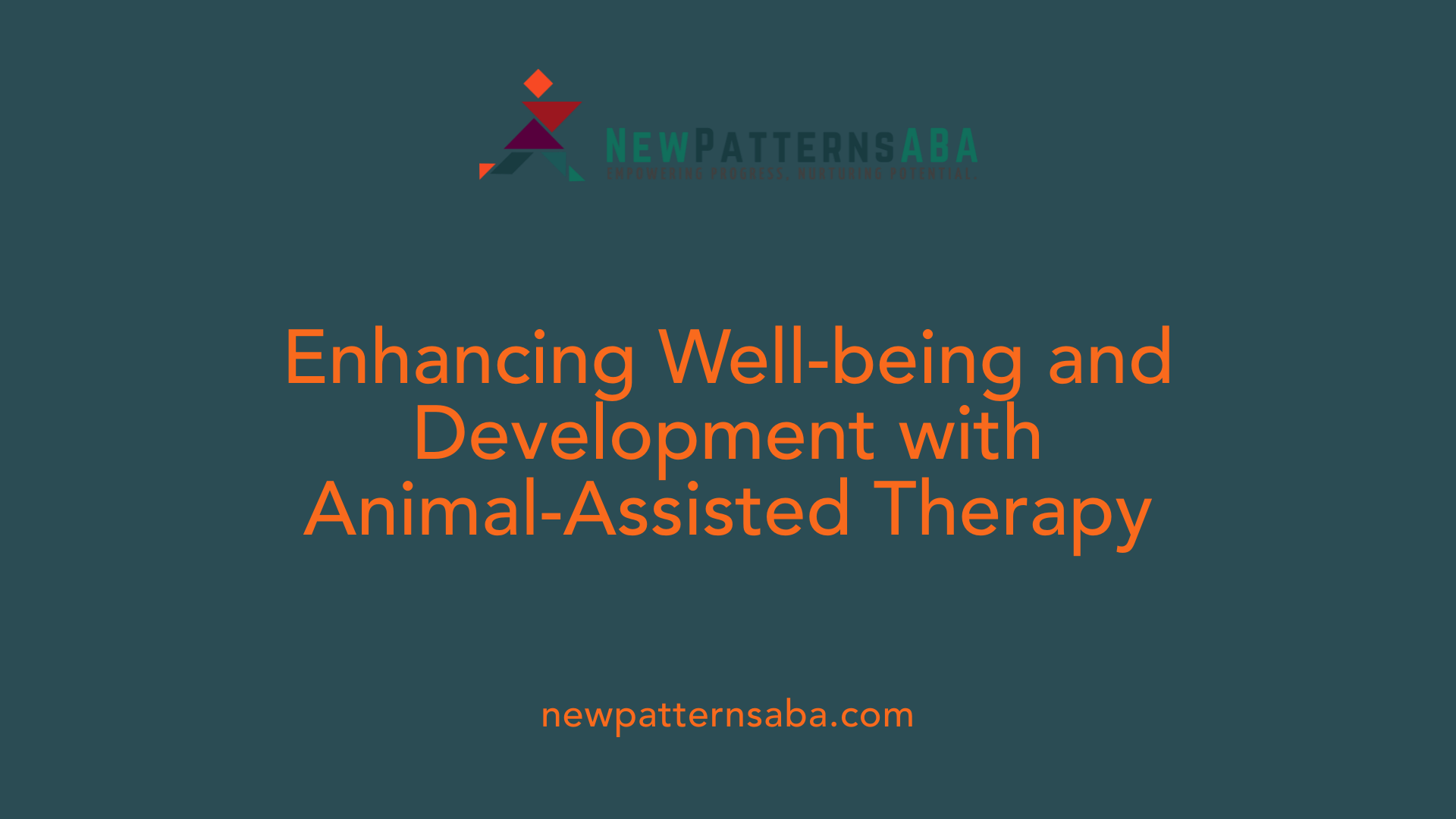
How does Animal-Assisted Therapy support the development and well-being of individuals with autism?
Animal-Assisted Therapy (AAT) offers multiple benefits that contribute to the growth and emotional health of children with autism. One of its significant impacts is on social skill development. Interacting with animals like dogs or horses can motivate children to engage more in social behaviors, improve communication, and foster a sense of companionship. Therapists and parents observe that these interactions often lead to better social responsiveness and decreased feelings of loneliness.
Beyond social skills, AAT is effective in enhancing emotional regulation. For many children, animals serve as non-judgmental companions that help them recognize and manage their feelings better. Through regular interactions, children can build self-confidence, learn acceptance, and develop emotional resilience. For example, activities like therapeutic horseback riding have been linked to improvements in speech, irritability, and hyperactivity.
Sensory integration is another area where AAT proves beneficial. The multisensory experiences involved, such as touching animals and paying attention to their environment, can help reduce sensory overloads, a common challenge in autism. These sensory interactions can calm anxiety, lessen meltdowns, and promote a sense of calm and security.
Research and clinical reports indicate that AAT can promote positive behavioral changes. This includes better communication skills, increased self-esteem, and elevated social engagement. The personalized, client-centered approach of AAT allows interventions to be tailored to each child's unique needs, which enhances effectiveness. Different models like triangle, diamond, or star are employed to adapt to specific goals, making the therapy flexible and responsive.
While the scientific evidence shows promising outcomes, it is still developing. Some studies report significant improvements in areas such as irritability, hyperactivity, and social communication, although more research is necessary to confirm long-term benefits. Limitations include the risk of animals provoking triggering behaviors or sensory overload, which calls for thorough assessments and careful planning.
In sum, AAT provides a supportive, engaging environment that can foster meaningful development across emotional, social, and sensory domains. Its ability to adapt to individual needs and promote a calm, accepting space makes it a valuable component of autism support strategies, emphasizing the importance of ongoing research to optimize its application.
Limitations and Challenges of AAT in Autism Therapy
What are the potential limitations of Animal-Assisted Therapy in autism?
Although Animal-Assisted Therapy (AAT) offers numerous benefits, it also comes with certain challenges and limitations. One significant concern is that animals could inadvertently trigger autistic traits, such as aggression, agitation, or sensory sensitivities. These responses may lead to meltdowns or behavioural outbursts, necessitating careful assessment of each child's triggers before session planning.
Sensory overload is another issue, especially when children are exposed to multiple animals or specific types of animals that might be overwhelming. Thorough evaluation of a child's sensory profile and choosing appropriate animals are essential to minimize this risk. Adaptive strategies involve gradual exposure and an individualized approach to ensure safety.
From a research perspective, the evidence supporting AAT's effectiveness varies greatly. Many studies suffer from limitations like small sample sizes, lack of control groups, and short follow-up periods. These factors diminish the strength of the conclusions drawn. Without long-term data, it is difficult to gauge the sustainability of observed benefits.
Additionally, there are no strict or standardized guidelines governing the delivery of AAT across providers. The absence of regulated practices can result in significant variability in the quality and safety of interventions. This lack of uniformity makes it challenging to compare outcomes or develop best practices.
Heterogeneity among the intervention types—such as different animals used, session models, and target populations—further complicates efforts to generalize findings. Each therapy might be tailored differently, making it hard to identify what works universally.
Despite these challenges, many of the risks associated with AAT can be effectively managed through careful assessment, professional training, and personalized planning. When properly implemented, AAT can be a safe and supportive adjunct to other autism interventions.
Diverse Forms of Animal-Assisted Interventions for Autism

What are some common forms of animal-assisted interventions for autism?
Animal-assisted interventions (AAI) encompass various programs using animals to support children with autism spectrum disorder (ASD). These programs aim to enhance social, emotional, behavioral, and physical skills.
One of the most recognized forms involves assistance dogs, also known as canine-assisted therapy. These highly trained dogs provide companionship, help with sensory regulation, and assist in behavioral tasks, promoting independence and emotional well-being.
Therapeutic horseback riding, or hippotherapy, is another widely used intervention. This form involves riding or interaction with horses to improve motor skills, including balance, coordination, and muscle tone. It has also shown benefits in reducing hyperactivity and irritability.
Dolphin therapy is a more specialized intervention where interactions with dolphins are used, though evidence for its effectiveness remains limited.
Other models of animal-assisted therapy include structured group settings where animals like dogs or horses are integrated into treatment plans following specific configurations—such as triangle, diamond, or star models—designed to meet individual needs.
While these interventions show promise, more research is needed to standardize practices and determine long-term benefits. They primarily focus on psychosocial health, providing a calming, motivating, and non-judgemental environment for skill development.
| Type of Animal | Primary Focus | Typical Uses | Notes |
|---|---|---|---|
| Assistance Dogs | Emotional security, independence | Alerting to sensory or behavioral issues, providing companionship | Dogs are trained to support daily living tasks |
| Horses (Equine) | Motor skills, emotional regulation | Balance, coordination, communication, and reducing hyperactivity | Also known as hippotherapy |
| Dolphins | Emotional and social stimulation | Less common; some programs use dolphin encounters | Scientific evidence is limited |
In conclusion, AAIs for autism utilize various animals matched with tailored therapeutic models to improve a range of symptoms. As research continues, standard practices are expected to evolve, enhancing their reliability and effectiveness.
Emerging Trends and Future Directions in AAT for Autism
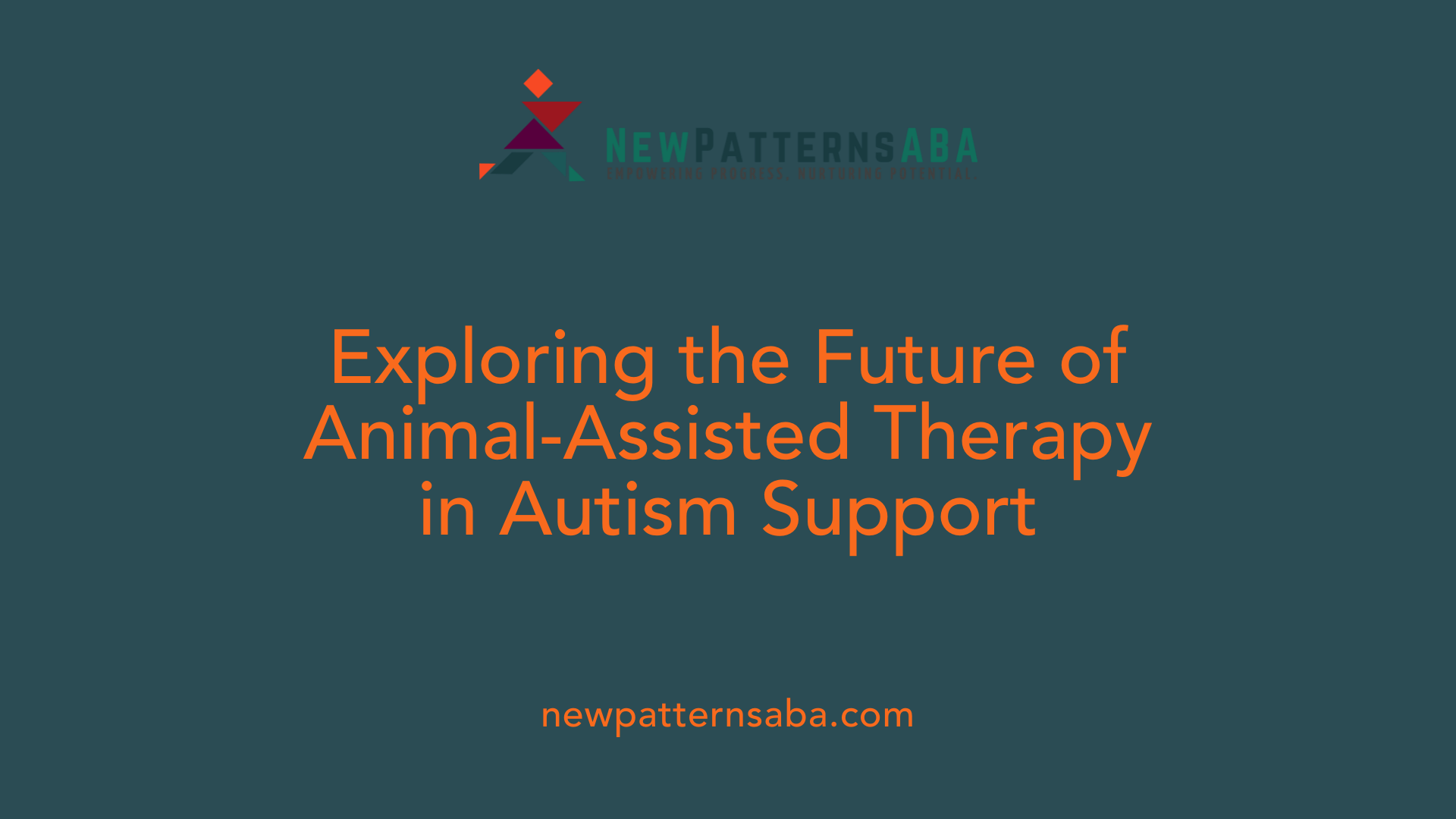
What are the future prospects and challenges for Animal-Assisted Therapy in autism support?
The future of Animal-Assisted Therapy (AAT) for autism holds promising potential but also faces significant hurdles. Researchers are calling for more rigorous, well-designed studies that focus on long-term outcomes, helping to establish clearer evidence of efficacy. Currently, many studies have limitations such as small sample sizes, high bias risk, or short follow-up periods, which restrict definitive conclusions.
Efforts are underway to standardize practice protocols. This includes setting guidelines around animal selection, training for handlers, session structure, and safety measures. Standardization aims to ensure consistency across different providers, making the therapy safer and more reliable.
Innovative models of intervention are also emerging. Robotic animals and virtual simulations are being tested as alternatives or supplements to traditional animal interactions. These models can help mitigate issues like allergies, animal availability, or safety concerns, broadening access and customization options.
Advances in neuroscience and psychophysiology could pave the way for more targeted therapies. For instance, understanding how AAT influences oxytocin release, multisensory processing, and emotional regulation could lead to personalized interventions tailored to individual needs.
However, despite these opportunities, challenges remain. The lack of universally accepted standards and the variability in practice can hinder widespread adoption. Demonstrating long-term benefits and understanding the mechanisms behind observed improvements are ongoing hurdles.
Collaboration among researchers, clinicians, animal handlers, and ethicists is essential to address these challenges. Ethical considerations around animal welfare and human safety must remain a priority, ensuring that interventions are both effective and humane.
In summary, the future of AAT in autism spectrum support is likely to be shaped by technological innovation, scientific rigor, and standardization efforts, aiming to maximize benefits while minimizing risks.
Summary and Final Thoughts on AAT in Autism Support
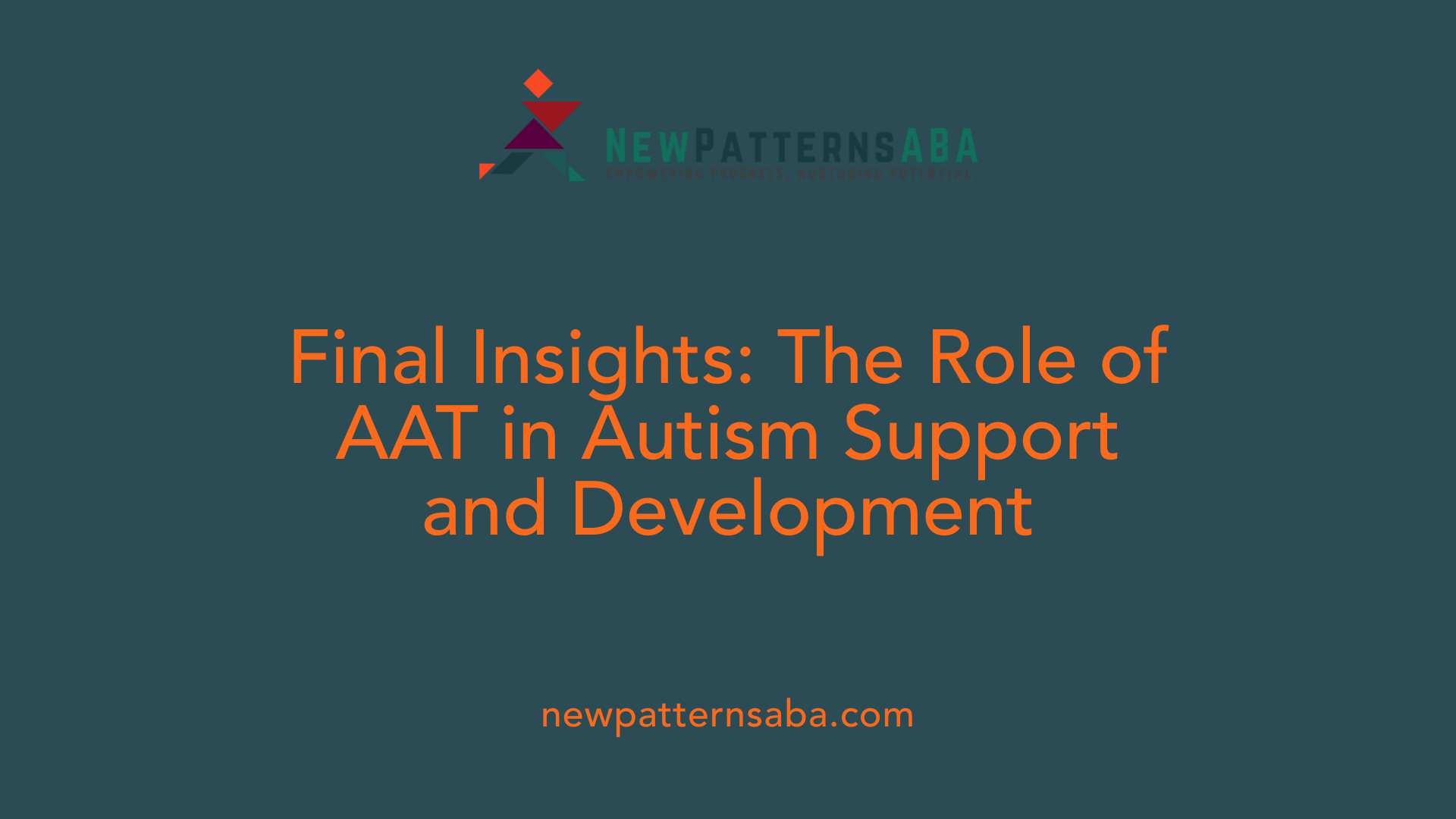
How does Animal-Assisted Therapy support the development and well-being of individuals with autism?
Animal-Assisted Therapy (AAT) plays a valuable role in enhancing the lives of children and adults with autism by fostering social, emotional, and sensory development. It provides multisensory interactions, such as touching animals or engaging with their environment, which can help mitigate sensory overloads and reduce meltdowns.
By offering a safe and supportive setting, AAT encourages emotional openness, trust, and companionship, which can alleviate feelings of loneliness and promote emotional regulation. Many children and adults report increased self-confidence and acceptance following therapy sessions.
Communication and social skills often improve as a result of interactions with animals, serving as a bridge for better human connections. Therapists and parents note that AAT helps children learn behavioral regulation, emotional awareness, and prosocial behaviors, ultimately leading to improved social engagement.
AAT’s client-centered approach allows sessions to be tailored to individual needs, utilizing different models like triangle, diamond, or star formations to adapt to specific goals. Despite some limitations—such as potential animal-triggered agitation or sensory overload—careful assessment and planning can mitigate these risks.
Research reviews, including meta-analyses of 45 studies with over a thousand participants, indicate that AAT has promising benefits in areas such as social communication, irritability, hyperactivity, and language skills. Notably, improvements in social cognition and stereotypical behaviors were less conclusive, highlighting the need for further research.
In adult populations, AAT with dogs and horses has shown potential in reducing perceived stress, social fears, and symptoms like anxiety and depression, with high participation rates demonstrating its feasibility.
While scientific evidence is still developing, existing studies suggest that AAT can support core aspects of autism, with ongoing research needed to clarify its mechanisms and optimize interventions. As part of a comprehensive therapeutic approach, AAT offers a compassionate, engaging, and adaptable option to promote growth and well-being among individuals with autism.
Concluding Remarks on AAT and Autism
Animal-Assisted Therapy holds promising potential for supporting individuals with autism by addressing core symptoms and enhancing overall quality of life. Its multisensory, emotionally supportive, and personalized nature can foster meaningful growth across social, emotional, and behavioral domains. Nevertheless, limitations concerning standardization and methodological rigor highlight the importance of ongoing research. As evidence and techniques evolve, AAT is poised to become a more integral part of comprehensive autism care, offering hope and tangible benefits to many.
References
- An Evaluation of Animal-Assisted Therapy for Autism ...
- Animal Interventions in Autism
- Effectiveness of animal-assisted activities and therapies for ...
- The effectiveness of animal-assisted therapy for children ...
- Effects of Dog Assisted Therapy for Adults with Autism ...
- Animal-assisted interventions
- An Evaluation of Animal-Assisted Therapy for Autism ...
- Research on animal-assisted intervention and autism ...
- The Effect of Animal-Assisted Therapy on Prosocial Behaviors ...






